The Facts About Radiation Exposure: What to do?

Radiation Beware!
This message just came in from my medical doctors office, Watson Wellness. The information is so important in clarifying what to do incase of radiation exposure that I have inserted the entire message with downloadable PDF attachment at the end of the blog.
As we watch with sadness and concern for the people of Japan as the extent of the damage from the recent 8.9 Earth Quake and subsequent tsunami continues to be revealed, it is perhaps a good time to review what precautions to take when confronted with the possibility of radiation contamination from a damaged nuclear power plant, like, for example, the San Onofre power plant south of Los Angeles. Although radiation of any kind is dangerous, those living in the vicinity of such a plant should be familiar with evacuation routes and procedures. Even in emergencies that do not cause damage to the nuclear reactor itself, radioactive gases may leak or be vented into the atmosphere.These gases often contain a radioactive form of the essential thyroid mineral iodine known as Iodine-131 or I-131 for short. Also called radioiodine, I-131 is formed in fission reactions from uranium-235. Once it enters the atmosphere it is chemically similar to the stable form of iodine, I-127. It quickly moves from the atmosphere into the water supply and soil and eventually enters the food supply. After an I-131 radiation leak occurs, one of the first foods to be affected is cow’s milk, which means babies and young children have the highest risk of exposure. Fortunately, the half-life if I-131 is relatively short, about eight days, and there is a medication that if taken within the first 2-4 hrs after a possible exposure can block the uptake of I-131 and prevent more than 90% of the toxic effects, which include destruction of the thyroid gland and the development of thyroid CA.
WE DO NOT RECOMMEND THE USE OF POTASSIUM IODIDE RIGHT NOW. IF THERE SHOULD BE EVIDENCE OF RADIATION, POTASSIUM IODIDE CAN BE USED, BUT OTHER ANTIOXIDANTS ARE ALSO IMPORTANT. The medication to protect against thyroid cancer is called Potassium Iodide and it is an over the counter mediation that can be purchased at your local pharmacy without a prescription and comes as 130 mg tablets and 65 mg tablets. Because many pharmacies are out of this, compounding pharmacies may also formulate the product for you. The following chart shows the Potassium Iodide dosing schedule as a function of age:
Recommended Single Doses of Potassium Iodide (KI) as a Blocking Agent, by Age Group:
Fraction of Tablet
Age Group 130 mg 65 mg
Neonates (birth to 1 month) 1/8 ¼
Infants (1 months – 3 years) ¼ ½
Children (3 – 12 years) ½ 1
Adolescents and adults (12 – 40 years) 1 2
Adults over 40 years 0 0
For persons older than 40 years of age, the risk for radiation-induced thyroid cancer is
extremely low, while the potential side effects of prophylaxis due to preexisting thyroid
disease tend to increase.
Adults over 40 therefore do not need to take potassium iodide as prophylaxis for exposure to I-131, unless exposure is extremely high, >25 Roentgen equivalents. It is important to take the first dose within 2-4 hours of possible exposure and to continue with the same daily dose for 3 months or until you are cleared to stop by your physician. Remember, Iodine does have side effects and can cause allergic reactions and may be contraindicated if you have thyroid disease.
Although many people are aware that iodine is important to protect against I-131, radioactive nucleotides have other serious health impacts including the weakening of the immune system and increasing oxidative stress. Therefore, several other supplements may be of benefit.
Antioxidants are nutrients that protect the body for oxidative stress and therefore radiation. Certain nutrients have been studied that are known to have protective effects. Lipoic acid in particular has many research studies documenting its protective effects against the radiation exposure from Chernobyl.
Any nutrient that supports glutathione, the body’s first defense in protecting against free radicals, is also beneficial. These include NAC, Vitamin C, Vitamin E and selenium. So if you are allergic to iodine or have concerns about taking it due to thyroid disease, you may want to take the antioxidants listed below.
We are recommending the following: There also are comprehensive formulas with antioxidants. We recommend either Deluxe Scavengers from Metabolic Maintenance, Detox Antiox from Designs for Health or Oxytrol from OrthoMolecular. These contain vitamins and plants that have antioxidant activity. If you wish to take things separately these are the recommended dosages:
• Lipoic acid 100 – 300 mg daily;
• NAC 500 mg 2 times daily;
• Vitamin C 2000 mg daily;
• Vitamin E 400 IU of gamma tocopherol;
• Selenium 200 mcg daily;
• Glutathione can also be taken orally as liquid liposomal
Many foods are rich in iodine and antioxidants. Fish, sea weed and chlorella are rich sources of iodine.
Please let us know if you need any of these supplements. They can be ordered through the Watson Wellness office at 310-315-9101.
To download a printable PDF, please click here. Radiation_H01 PDF



